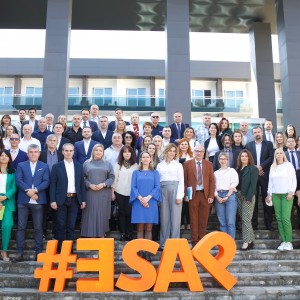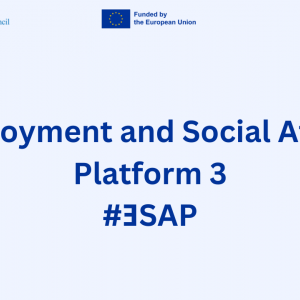Frequently Asked Questions
What is Observatory on employment in the Western Balkans?
The Observatory is a platform which aims to enhance the comparative knowledge and evidence on the current employment and labour market trends and short term fluctuations in the Western Balkan region and the governments’ responses to the COVID-19 crisis.
The Observatory is developed as a part of the 3-year Regional Cooperation Council’s (RCC) Employment and Social Affairs Platform project (ESAP), funded by the European Union (EU), and implemented jointly with the International Labour Organization (ILO).
What data are available in the observatory?
The observatory features two sets on data to do with employment and social affairs in six Western Balkan economies (WB 6):
- Employment indicators, broken down into 3 categories: Annual; Quarterly; and Monthly. Annual and Quarterly data feature data pertaining to the situation in the labour markets of six economies in the region (labour force; employment rate; activity rate; gender structure of labour force, etc.), while the Monthly numbers relate to the newly registered unemployed, and stock of unemployed persons registered with national Public Employment Services (PES); and
- Public Policy Tracker, presenting both short-term socio-economic measures of the WB6 economies to tackle negative effects of the crisis caused by the COVID 19 pandemic, and longer-term measures as envisaged by national Economic and Reform Programmes (ERP).
Each Western Balkan economy has designed and developed a number of measures to reduce the negative impact of the current situation. Through the regional observatory, all economies will be able to monitor trends of implementation and impact of the measures.
How to search the data?
Once on the HOME page you can select the category of data you wish to look at: employment indicators (under the INFORMATION & MONITORING section) or Socio-economic measures (in PUBLIC POLICY TRACKER section).
Employment data in each of the three sections featured through tabs: Employment Indicators Annually; Employment Indicators Quarterly; and Newly Registered Unemployed Monthly can be retrieved in tables but also as graphs, featuring individual, selected or all economies, which you can choose from the dropdown menus. For easier comparison data can be chosen for one or more months and can be additionally screened through population groups divided by age, gender and qualifications level, as per data available at the original data sources.
Public Policy Tracker can be accessed through selection of the key words and/or specific economy on the drop down many in the dialogue box or through GIS map, featuring capitals of all 6 economies with number of socio-economic measures.
Two categories of data are available in this section as well: 1) short-term measures as national responses to crises caused by the COVID-19 pandemic; and 2) longer term ones, being part of Economic Reform Programmes of each of the six economies in the Western Balkans.
What are the sources of data?
Employment indicators, presented in Information & Monitoring section of the Observatory, are collected from national Public Employment Services on monthly basis, and from national Agencies for Statistics on quarterly and annual level.
Data presented in Public Policy Tracker, pertaining to socio-economic measures are collected from national sources and Economic Reform Programmes (ERP) from each of six Western Balkan economies available online. The other category of data available in this section, related to measures introduced to address the socio-economic crisis caused by the COVID 19 pandemic as of March 2020, is collected also from official national sources that publish the relevant measures.
These are the links of the official institutions from which ESAP collects the data for the Observatory:
Albania
Bosnia and Herzegovina
- Government of Federation of Bosnia and Herzegovina
- Government of Republic of Srpska
- Government of Brcko District
- Directorate for Economic Planning
- Agency for Statistics
- Labour and Employment Agency
Kosovo*
- Office of the Prime Minister
- Ministry of Finance
- Agency for Statistics (KAS)
- Employment Management Information System (EARK)
Montenegro
- Government
- Official website of the Government of Montenegro and National Coordination Body for Infectious Diseases
- Statistical Office
- Employment Agency
North Macedonia
Serbia
- Government
- Ministry of Finance
- Statistical Office
- Statistical Office’s Publications website
- National Employment Service
What are Economic Reform Programmes (ERPs)?
As of 2015, all candidate countries and potential candidates submit annual Economic Reform Programmes (ERP) to the European Commission. They are an expanded version of the previous Pre-Accession Economic Programmes for candidate countries. The ERPs contain medium-term macroeconomic projections (including for GDP growth, inflation, trade balance and capital flows), budgetary plans for the next three years and a structural reform agenda. The structural reform agenda includes reforms to boost competitiveness and improve conditions for inclusive growth and job creation in the following areas:
- Energy and transport markets
- Sectoral development
- Business environment and reduction of the informal economy
- Research, development and innovation and the digital economy
- Trade-related reform
- Education and skills
- Employment and labour markets
- Social inclusion, poverty reduction and equal opportunities
The European Commission and the European Central Bank (ECB) both make assessments of the ERPs that are submitted to the Council of Ministers for direct discussions with the enlargement countries.
Source: https://ec.europa.eu/neighbourhood-enlargement/policy/policy-highlights/economic-governance_en
How frequently is the data updated?
The data in the Observatory is updated subject to availability of data at the sources – national authorities of Western Balkan economies. Employment indicators are being updated monthly, although specific indicators other than numbers, age, qualifications and gender structure are drawn from quarterly or annual national reports hence updated quarterly or annually, respectively.
The data pertaining to socio-economic measures follows economy specific activities and introduction of new measures in case of responses to the crisis caused by the COVID-19 pandemic and these are updated accordingly. Longer-term socio-economic measures stemming from Economic Reform Programmes (ERPs) are updated annually as per dynamics of the national Programmes.


